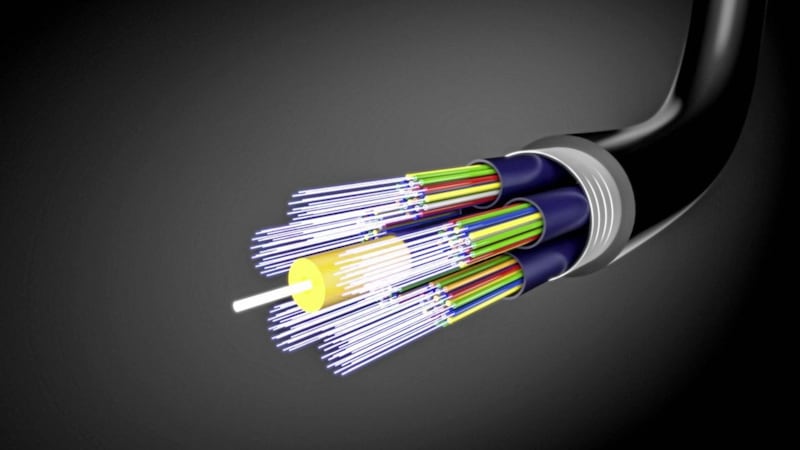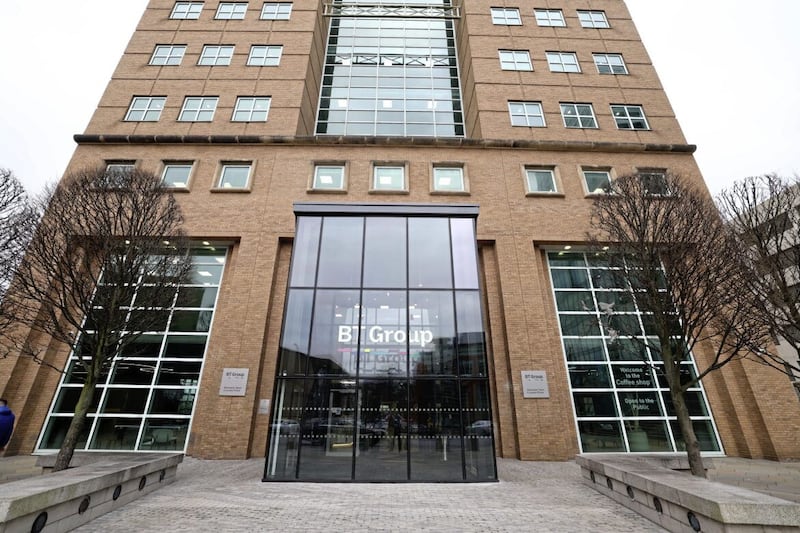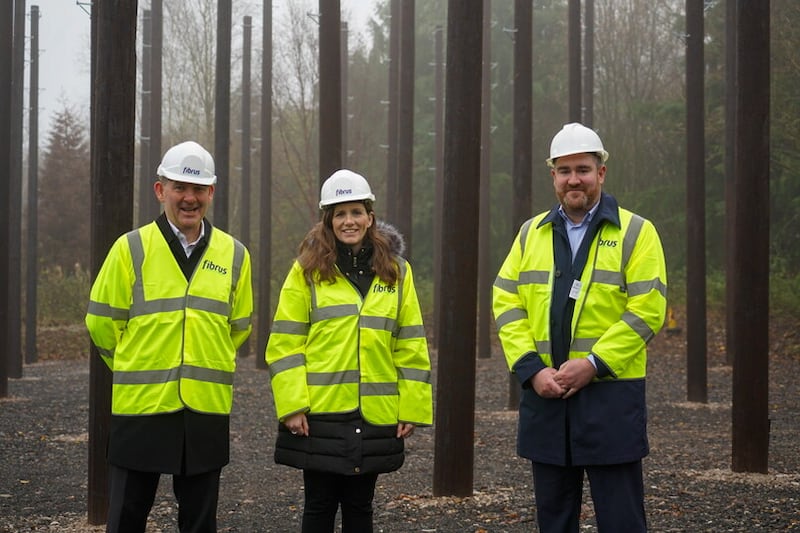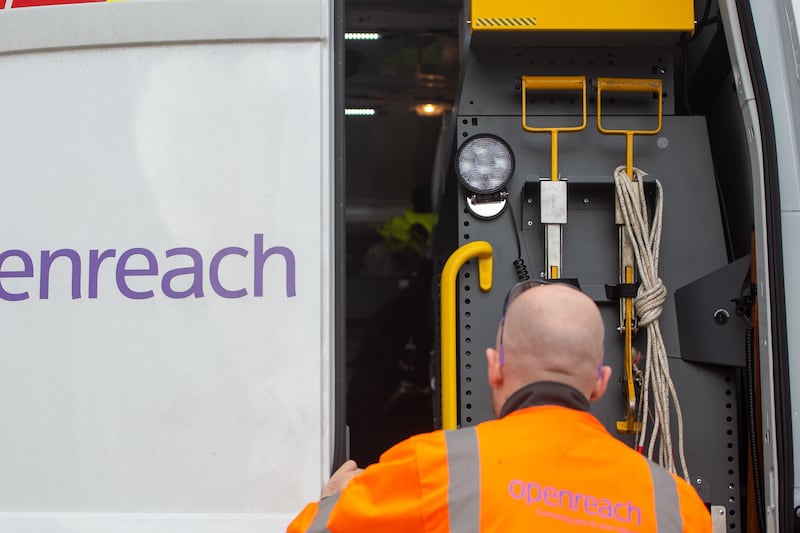JUST two bidders - Openreach and Fibrus - remain in the running to secure delivery rights in the £165 million 'Project Stratum' process to deliver superfast broadband to around 80,000 mainly rural homes in the north.
It follows the surprise withdrawal from the process of US private investment firm Granahan McCourt Capital, which is already proving the government-backed broadband roll-out across the Republic.
GMC was understood to have been unhappy that the Department for the Economy was pressing ahead with its original timetable for bids to be completed, despite the Covid-19 outbreak.
It claimed that restrictions linked to the containment of the virus made it impossible to prepare its bid on time, and as a result it failed to submit its initial tender for the scheme by the early May deadline.
That leaves the way clear for BT’s infrastructural arm Openreach and Fibrus, the broadband company set up by former Enet chief executive Conal Henry, to square up to each other in Project Stratum, which will involve a form of taxpayer subsidy matched by private sector investment.
An announcement on the preferred bidder is due in the coming weeks.
Both remaining players in the process have been on separate charm offensives in recent days.
Last week Fibrus pledged that every home in the north will have access to full fibre broadband by 2025 under an ambitious commitment it has to identify and plug any remaining gaps in fibre coverage.
And Openreach, which builds and maintains the largest fixed communications network in the north, revealed it has reached a milestone of ensuring 360,000 homes and businesses - more than 40 per cent of properties in the north - are now able to access full fibre broadband at speeds of up to one gigabit.
It continues to build the full fibre future-proof broadband network across the region, with an aim of reaching 525,000 premises (60 per cent) by the end of next March.
The Centre for Business and Economic Research (Cebr) has previously predicted that connecting everyone in Northern Ireland to full fibre broadband by 2025 would create a £1.3 billion boost to the region’s economy and boost employment by 1.6 per cent as older workers, carers and working parents are supported and able to engage in the world of work.
Openreach's announcement coincides with a paper produced by Ulster University Economic Policy Centre deputy director and economist Richard Johnston confirming that access to high speed broadband will give the north an advantage in creating high tech industry clusters and encouraging fresh foreign direct investment.
The report’s main findings show that there have been significant changes over the last few months which will ultimately impact on demand for full fibre.
It says‘levelling up’ connectivity across the region can lead to greater opportunities for jobs in rural rather than urban areas, support remote working (thus reducing commuter journeys, traffic congestion and Co2 emissions) and supporting the use of new technology across health care, education, access to government and facilitating new technologies for home, family and social life.
Mr Johnston said: “Even after this current crisis subsides, infrastructure demand will continue to increase, and as Northern Ireland moves towards reopening its doors for business, the roll-out of full fibre broadband will be a key enabling technology, allowing the region to compete with rival nations, boost incomes and standards of living and meet policy objectives of digitisation, improved sustainability and further embracing globalisation.”
Mairead Meyer, director of Openreach NI, said: “The full fibre build programme is central to Northern Ireland’s digital future and economic growth and will provide the region with more reliable, faster and future-proof broadband.
“We’re delighted to have reached the 360,000 premises milestone today. We are building right across Northern Ireland, having finished projects from Bangor and Magherafelt to Enniskillen, as well as building full fibre to rural communities in Tamnaghmore and Upper Ballinderry among others.
“Belfast city has 72 per cent coverage of full fibre, making it the second-best covered city in the UK, and seven out of 11council areas are within the top 20 local authorities in the UK for access to faster connectivity speeds.
“This UU paper highlights the benefits full fibre could bring in boosting productivity and renewing towns and communities across the region.”

TEN FACTS ABOUT FULL FIBRE
- Connecting everyone in Northern Ireland to full fibre broadband by 2025 would create a £1.3 billion boost to the region’s economy, according to the Centre for Business and Economic Research;
- Fibre optics are strands of glass around one tenth the thickness of a human hair. They transmit data using light signals.
- A single strand of fibre can provide enough capacity to serve up to 32 individual properties with gigabit speeds
- Pure fibre optic broadband can run at speeds of 1 gigabit per second (1000Mbps) – that’s more than 15 times faster than today’s UK average broadband speed. You can download a two-hour HD film in less time than it takes to make a cup of tea. And video gamers could download a 5-gigabyte virtual reality (VR) game in 1.7 minutes, instead of waiting half an hour.
- More people getting online at the same time is easier too – a family of four can all stream ultra HD or 4k quality video simultaneously, without waiting or buffering.
- Full fibre is more reliable than traditional copper connections. A full fibre broadband signal isn’t affected by external interference whereas copper can be impacted by outside electrical signals – including electric fences and even bad weather. One recent report stated that full fibre is 70 to 80 per cent more reliable than copper resulting in lower fault rates.
- A fibre optic cable can send a signal over 120 miles without any real loss of quality. Traditional copper cables can lose signal at around one mile.
- Full fibre is better for the environment – the amount of electricity used to power fibre is significantly less than needed for copper cables. Better connectivity also enables more people to work from home, which cuts down on commuting. Research suggests fibering up the whole of the UK could save 300 million commuting trips – reducing carbon emissions by 360,000 tonnes.
- Full fibre can boost business productivity. It enables cheaper broadband powered phone services, and better access to cloud-based computing services. For example, full fibre connectivity combined with cloud computing means businesses can upload, store, access and download vast amounts of data in minutes instead of hours. Data is backed up and securely archived off-site so not relying on costly, ageing servers taking up expensive office space.
- Full fibre broadband will be crucial in supporting plans to give NHS patients access to ‘virtual clinics’ where patients who don’t physically need to come hospital can get a video consultation with their doctor. It can also allow hospitals to share HD quality graphics of medical scans in seconds to improve diagnosis speeds. For example, medical staff can download a 2 gigabyte CT scan in 40 seconds, instead of 14 minutes.







